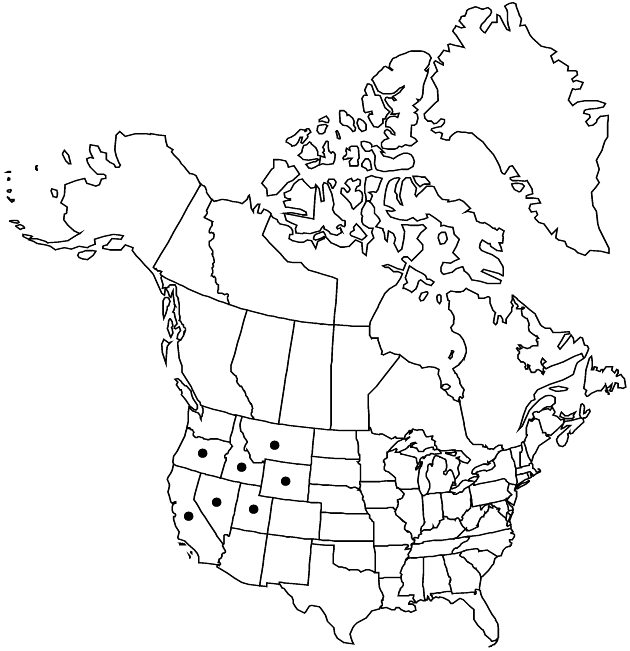Ionactis alpina
Pittonia 3: 245. 1897.
Common names: Lava ankle-aster
IllustratedEndemic
Basionym: Chrysopsis alpina Nuttall J. Acad. Nat. Sci. Philadelphia 7: 34. 1834
Synonyms: Aster scopulorum A. Gray
Revision as of 21:00, 5 November 2020 by imported>Volume Importer
Plants 5–12(–20) cm (sometimes weakly cespitose, caudices multicipital or with relatively short branches; rhizomes fibrous-rooted, thickened, becoming woody). Stems proximally herbaceous or slightly woody, eglandular. Leaves: proximal separated by evident internodes, spatulate, reduced in size distally; mid and distal ovate to oblong or linear, 4–15 mm, margins narrowly whitish hyaline, faces densely scabrous-hispidulous. Heads borne singly. Involucres 7–10 mm. Disc florets bisexual, fertile; corollas 5.5–7.5 mm. Cypselae 5–6 mm, faces eglandular. 2n = 18, 36.
Phenology: Flowering May–Jul.
Habitat: Dry ridges, slopes, and flats, commonly with sagebrush
Elevation: 1300–2000(–3300) m
Distribution

Calif., Idaho, Mont., Nev., Oreg., Utah, Wyo.
Discussion
Selected References
None.
Lower Taxa
None.
